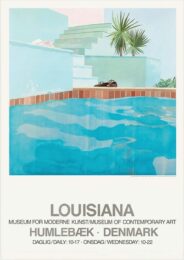


The last fifteen years of the nineteenth century and the first fourteen of the twentieth saw the triumph of the original print. The battles fought by Bracquemond and others to establish the supremacy of the painter-etcher over the interpretative craftsman who transferred existing paintings by various artists onto the copper plate had been won. A multiplicity of art movements coexisted: Impressionism was established, as were Symbolism. Art Nouveau, Idealism, Realism: the Salons flourished with their own varieties of academicism, while the latter part of that thirty-year period saw the rise of Post-Impressionism. Cubism. Art Deco, Futurism.
It has long been fashionable to exclusively admire the graphic oeuvre only of those artists who had established their reputations as painters. It is true that a number of great painters also produced some great original prints, frequently with only the minimum tutelage in technique. Here. however. the role of the printer in coaching, encouraging, printing and proofing is frequently overlooked. Modest in scope in relation to the printing of black and white etchings, the role of the printer becomes huge when dealing with colour prints. There are two basic ways to print a colour etching. The first involves using several plates, one for each colour. A long and tedious procedure demands that the colours should be printed in sequence. with time required between each printing for the ink to dry, each proof needing to be registered in such a manner that each subsequent plate is placed in the right position for its colours not to overlap in the wrong places. The second way, colouring a la poupée, involves dabbing a single plate with the several colours simultaneously for a single printing. This means the plate has to be literally repainted for each proof, and makes it almost impossible to achieve uniformity of colour in each proof of an edition.
The middle eighteen nineties saw the golden age of the colour print. Etchings and aquatints as well as lithographs were avidly bought by the public which demanded colour. Some painters were prepared to submit to the discipline necessary to create prints in colour. Others chose the easier path of submit-ting a watercolour to a good printer, and letting the printer and his staff transfer the image onto stone or metal plate, the artist doing little more than approving of the final effect and signing the proofs, a practice carried out by a number of well-known artists today. The only perceptible difference between such prints and the prints of interpretation executed by various copy-craftsmen in earlier times was that the latter never pretended they were producing original prints from the hand of the painter. There was also a small group of artists who were primarily graphic artists, and only incidentally painters. They were frequently absolute masters of their craft, experimenters who greatly widened the possibilities of their medium. Some were their own printers, but none disdained working with the great printers such as Delatre, himself a fine graphic artist, Ancourt, Clot or Chaix, all of whom employed superb craftsmen who delighted in sharing their expertise.
The term ‘Belle Epoque’ encapsulates a style more than an era. There is style in the clothes: elegance, self-confidence, beauty; each feathered hat is a creation, not a confection. There is style in the subjects: elegant women at home, promenading, at the ball, making up, dressing. shopping, with their lovers, alone, on stage, or waiting for a client. There is style in the treatment: flamboyant or wistful, dealing with high or low life, domestic or public occupations. There is style in the imagery. even when cruel in the observation. This accumulation of style in every aspect of execution itself forms an immediately recognisable style which transcends the appeal of nostalgia.
The artists discussed here were instrumental in creating the image of the Belle Epoque. Using conventional techniques of etching, drypoint and mezzotint, Tissot accurately fixed for ever the look both of the grand bourgeois ball and of the intimacy of family life. Helleu used the drypoint medium with breath-taking facility to bring to life the faces and features of so many beautiful (and some less beautiful) women. Legrand developed the aquatint to a degree one would consider without peer until one discovered the totally different effects achieved through use of a variation of the same technique by Manuel Robbe. Cheret created the modern poster, using colour lithography in new ways which enabled the technique to be used both for the street placards of Toulouse-Lautrec, Steinlen, Grasser and Mucha and for portfolio prints. Each of the artists discussed appropriated one or more aspects of daily life to develop and portray. Some lived long and comfortable lives. others short and tragic ones. One regrets that lack of space precludes more than a bare mention of such artists as Charles Maurin, who depicted mothers and children with great love; Hermann-Paul, who analysed the foibles of his day with humour as well as accuracy: Richard Ranft, Henry Somm. Georges Bottini, Norbert Goeneutte, Henri Boutet, Albert Bernard, Alfred Muller, each of whom has left a substantial body of work: and Jacques Villon, one of the greatest masters of the technique.
Victor Arwas, Editions Graphiques